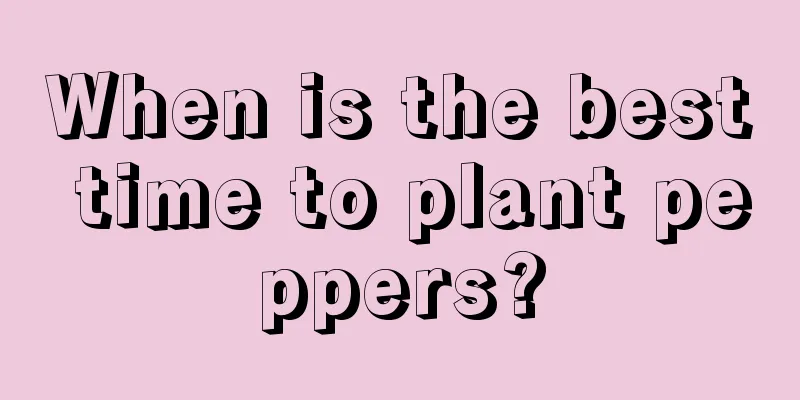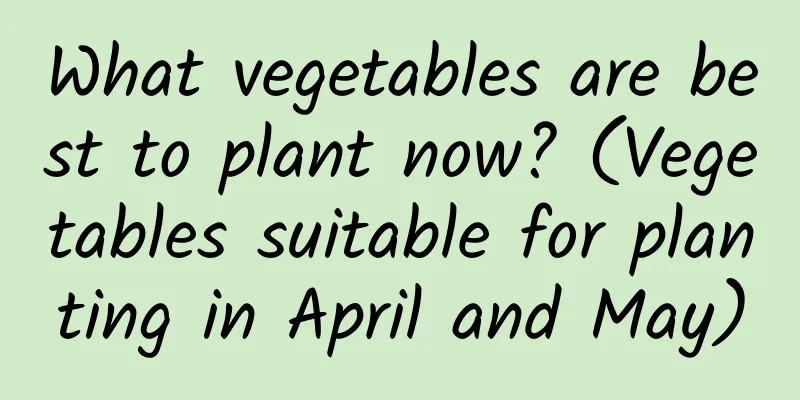When is the best time to plant peppers?

|
Peppers prefer warm climates, and their optimal growing temperature range is between 20 and 30 degrees Celsius. Peppers can be sown between March and July. In the southern regions where the climate is warmer, peppers can be grown almost all year round. Let’s take a look at when is the best time to plant peppers? When is the best time to plant peppers? In the plains, pepper cultivation is mainly divided into two seasons: spring and autumn. Spring planting usually starts around January, which is the best time for peppers to grow. If conditions permit, sowing can be done in advance in late October, and the seedlings can be protected over the winter by covering with film, and then transplanted in February to March. In this way, the peppers can be put on the market in advance in April to May, thus obtaining better market value. Autumn planting takes place from July to August. In the mountainous areas of northern Guangdong, the sowing time can be flexibly arranged according to market demand, generally from January to early April. In addition, off-season cultivation can also be carried out in winter in northern Guangdong. The climatic conditions in different regions have a certain impact on the sowing time of peppers. In the south, such as Hunan, Hubei and other Jiangnan regions, pepper sowing usually starts in mid-March of the lunar calendar. In the north, most areas sow seeds indoors in mid-April, and then move the seedlings outdoors for cultivation after the average temperature reaches 20 degrees Celsius. How long does it take for peppers to bear fruit? About a month after the seedlings are planted, the peppers will bloom and begin to bear fruit, and the entire harvesting period lasts about 2 to 3 months. Here are some things to keep in mind when growing peppers: Peppers have a temperature requirement somewhere between tomatoes and eggplants . The ideal temperature range for seed germination is 23 to 30 degrees Celsius, and it is difficult to germinate below 15 degrees Celsius. Peppers in the seedling stage require higher temperatures to promote growth, and low temperatures will slow down their growth. During the flowering and early fruiting stages, ideal temperatures are 20 to 25 degrees Celsius during the day and 15 to 20 degrees Celsius at night. During the fruiting period, excessively high soil temperatures, especially strong direct sunlight to the ground, may have a negative impact on root growth and may cause toxin diseases and sunburn. Growth habits of peppers Peppers depend on adequate sunlight for efficient photosynthesis. If there is insufficient light, the growth rate of peppers will slow down, thus affecting the yield. Therefore, make sure you choose a sunny location when growing peppers, or consider using artificial light to supplement the lighting. At the same time, peppers also need an appropriate amount of water for normal growth and development. Drought conditions can slow pepper growth and reduce yields. However, excess water is equally detrimental and can lead to root diseases. Therefore, during the planting process, water should be managed reasonably to maintain appropriate soil moisture. The above is an introduction to the planting time and some cultivation key points of peppers. As a common side dish in daily life, the demand for peppers is still relatively large.
|
<<: Can lucky bamboo survive in the soil? How to grow lucky bamboo in soil?
Recommend
How to grow Isuzu jade
1. Choice of soil and pots: If you want to plant ...
The difference between verbena and lavender
1. Difference of blades The leaves of verbena are...
How to grow Cordyceps sinensis to make it more vigorous?
Cordyline is an evergreen shrub of the genus Cord...
Grape hard branch grafting time
1. Grafting time Grape hardbranch grafting is ver...
How to grow camellia in winter
Camellia winter care place In winter, when the te...
Can the evergreen be repotted in autumn?
1. Is it possible? The temperature and climate in...
Pecan planting conditions and climate requirements
Introduction to Pecan Pecans are thin-shelled pec...
The difference between sea daffodils and hydrangeas
Introduction to Sea Daffodil and Weigela The sea ...
Does the sycamore tree shed its leaves in winter?
1. Do leaves fall in winter? This type of plant i...
Is baby's breath a perennial or an annual? How to make dried flowers
1. Perennial or annual Gypsophila paniculata is a...
How to propagate chrysanthemums by cuttings
1. Operation steps 1. First, choose the branches ...
What does Cineraria do?
Ornamental effect Cineraria is a plant with great...
Can potted peonies be placed outdoors in winter? Are they afraid of freezing?
1. Can it be placed outdoors in winter? Whether p...
Ruyi Queen Hydroponic Rooting Method
1. Cut branches First, choose a well-grown plant ...
What to do if the gardenia buds turn yellow and fall off
1. Apply fertilizer Reason: During the blooming p...









